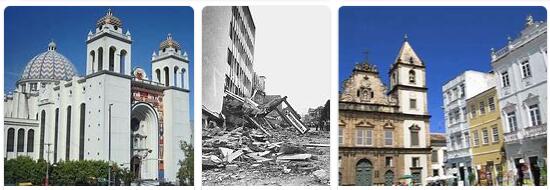Travel to Cuba: Fancy a Dance?
Even if as a European you don’t necessarily have the rhythm in your blood, on a trip to Cuba you can hardly avoid shaking the dance floor. Do you even want that? After the third song by the live band at the latest, there is hardly anyone left in the chair, there is lively dancing and partying until the early hours of the morning. Warning: don’t party too wildly! You can experience so much more on a trip to Cuba. And you definitely don’t want to miss that…
Vintage cars, salsa and Cuban rum
Vintage cars, old colonial buildings with morbid charm, white dream beaches, lots of music and friendly people – an extract from what Cuba has to offer. Because the island also attracts with enchanting natural landscapes and extensive coral reefs. Oversized streets used by old chevys, horse-drawn carriages and cyclists. Horsemen, hitchhikers and now and then an old colonial building shape the landscape of Cuba. With good Cuban rum and a cigar, salsa, rumba and mambo are served here in small bars until the early hours of the morning danced. So where do you start on a trip to Cuba? It’s entirely up to you. We recommend you to visit the lively cities and relax on one of the dream beaches, but also not to neglect the sometimes bizarre natural landscapes. The limestone mogotes or the rainforest of the Sierra Maestra, which once provided shelter for Fidel Castro and Ernesto Che Guevara, attract numerous visitors to a Cuba vacation.
Travel information in brief
Travel time
Cuba is easy to travel to all year round. From November to the end of April the climate is particularly pleasant with temperatures around 25 degrees and relatively little rainfall. Between May and October it gets warmer in Cuba, but also more humid and you should be prepared for one or the other rain shower. From August onwards there are more winds, with the right storms usually sparing the island.
Currency / money
The official means of payment in Cuba has been the “peso cubano” (CUP) since 2021. Euros can be exchanged for CUP on site. In Varadero and other tourist centers, the euro has even been introduced as an official means of payment and can be used there. Credit cards from German banks are accepted in larger hotels and restaurants, but no credit cards from US institutions (American Express, Diners Club) or German subsidiaries of US institutions (e.g. Citibank).
Vaccinations
There are no compulsory vaccinations for Cuba, but the Federal Foreign Office recommends vaccination against hepatitis A, diphtheria and tetanus as well as hepatitis B for long-term stays. In general, Cuba is malaria-free, but there have been repeated cases of dengue fever in the past, which is also transmitted via mosquitoes. Please talk to your doctor about your vaccination protection at least two months before departure.
Visa / entry
German citizens can enter Cuba for 30 days with a passport that is valid for at least 6 months and a tourist card. A one-time extension of 30 days is possible. However, a visa is required for longer stays. You can obtain the tourist card from your tour operator or from the Cuban diplomatic mission abroad. Children can easily enter with their own children’s passport including a photo. Please also note the provisions of the Federal Foreign Office: www.auswaertiges-amt.de.
Cuba – Viva la Revolución!
Beautiful vintage cars, old colonial buildings and white dream beaches – just an excerpt of what Cuba still has to offer. The island also attracts with enchanting natural landscapes and animals that can only be found on the island. Because Cuba is home to the smallest hummingbird species and thus also the smallest bird in the world – the bee elf! The center of the island with its seemingly endless expanses also has a very special charm. One or the other rider that can be seen here is almost reminiscent of the Wild West. Extensive and intact reefs line the coast of the island and await you with rare coral formations, colorful fish and turtles.
In addition, the Cubans are one of the most cheerful and friendliest peoples in the world, even without much material wealth. They are true improvisation artists and can fix anything or convert anything into something usable. Car tires are mounted on carriages, candles are used to light vehicles and old Russian trucks are quickly converted into city buses. Crumbling facades and lovingly restored houses are mostly direct neighbors in colorful towns. With rum and cigars, people dance late into the night in small bars and relax on the white sandy beaches under coconut trees on the weekends.







